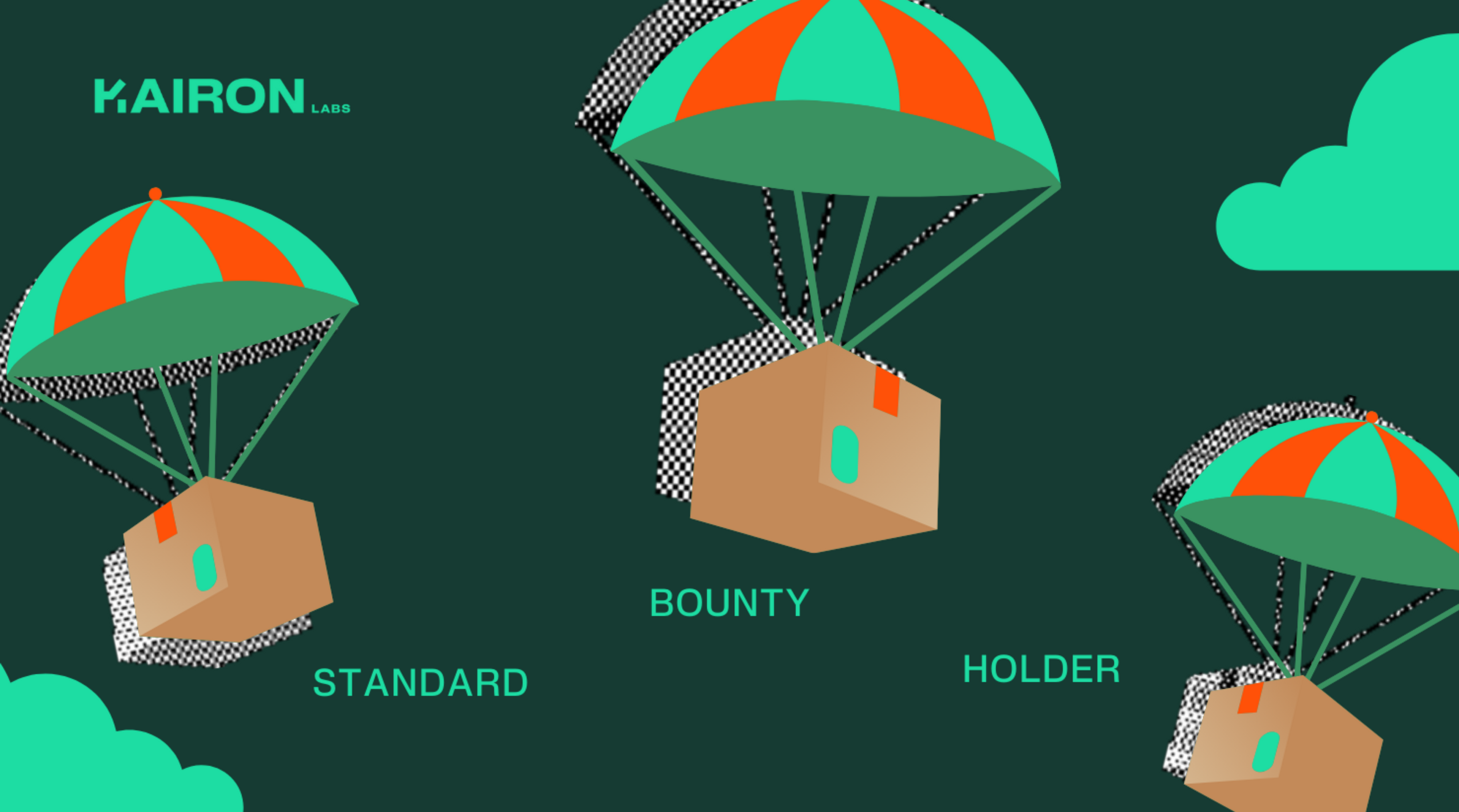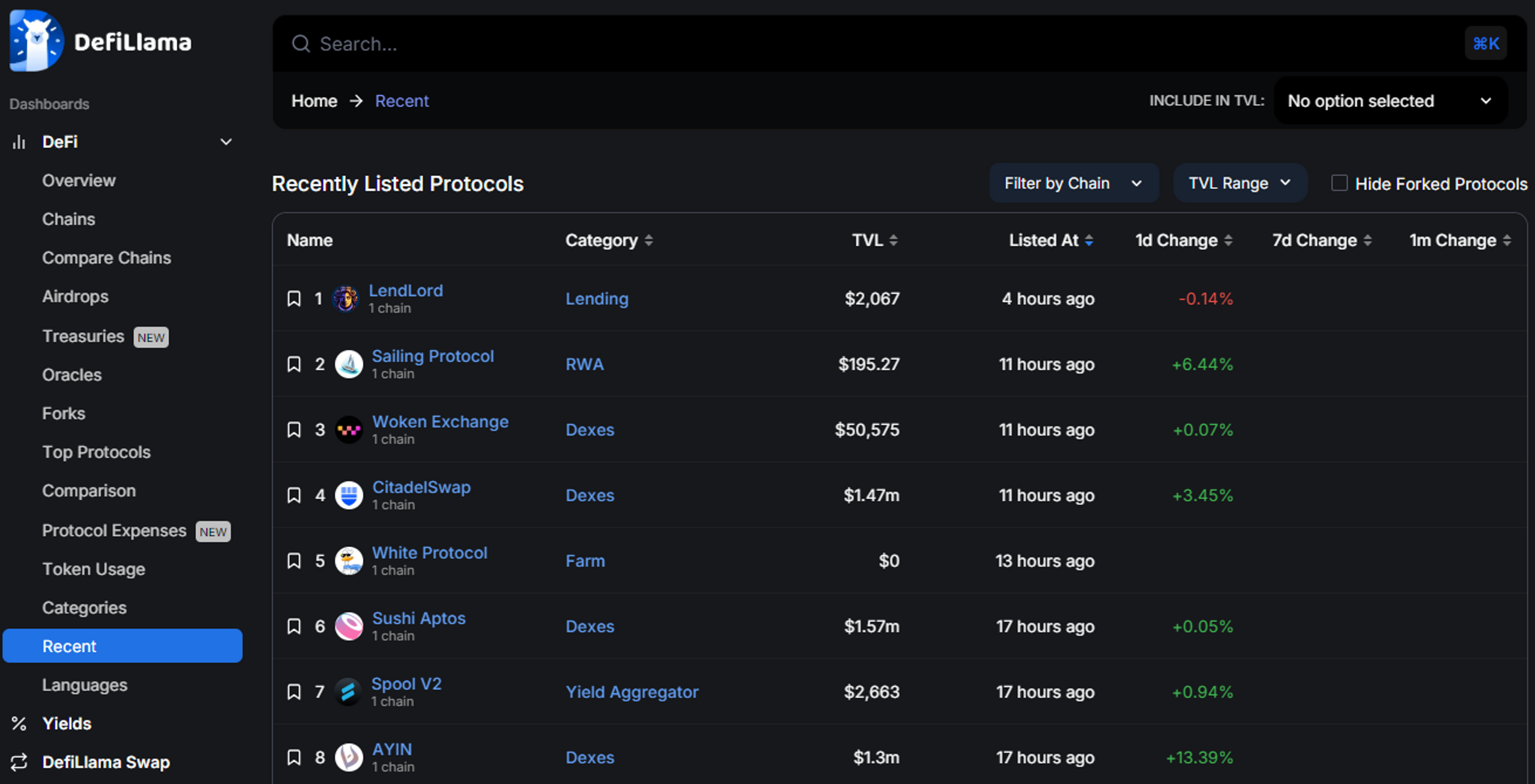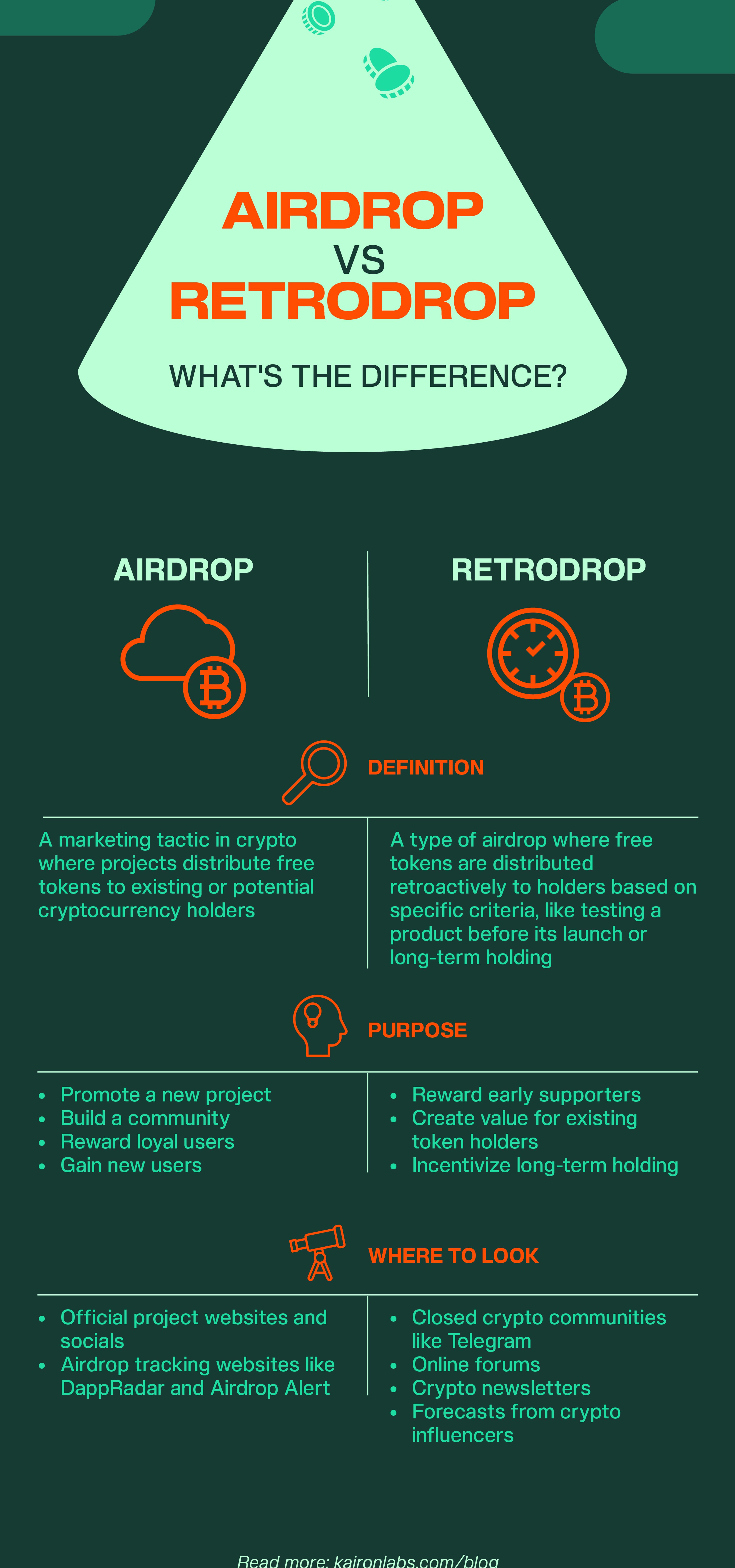
Airdrops and Retrodrops Decoded: A Comprehensive Guide

Some of this year’s most anticipated airdrops have just landed and with such huge successes from Arbitrum’s $ARB to Celestia’s $TIA, it seems the community is gearing up for more buzzy drops in 2024. You don’t want to be the only one left empty-handed.
Today, we’ll take a deep dive into airdrops and retrodrops, discover what makes crypto’s “Free Tokens” marketing tactic irresistible, and get insider tips on how to get the most value out of it.
An Overview
Crypto airdrops and retrodrops are two of the most common forms of token distribution aimed to incentivize desired actions from the crypto community, such as:
- Promoting a new project
- Testing a new token before its launch, and
- Long-term holding
Think of it as a surprise giveaway where you get digital assets for free or by participating in simple tasks. Blockchain projects use this marketing tactic to create awareness and hype and drive continuous engagement.
They also foster a sense of community in the crypto space by directly involving token holders in the project's growth, transforming users into advocates.
What are Airdrops?
An airdrop is a strategic marketing move in crypto, where a project distributes free coins or tokens directly to wallet addresses to generate buzz and push circulation in a saturated market. Airdrops typically target active members within the crypto community in exchange for various promotional tasks and loyalty.
What are Retrodrops?
A retrodrop is a form of airdrop, involving the retrospective distribution of free tokens to holders. This occurs based on predetermined criteria, such as testing a product before its official launch and long-term token holding. A way for crypto projects to reward early adopters who believed in them from the outset.
We have a free infographic at the end of this blog to compare the two.
Types of Airdrops
Blockchain projects can utilize various types of airdrops based on their marketing goals. Let’s look at three of the main types of airdrops you’ll commonly find: standard, bounty, and holder.

Types of Airdrops - Standard, Bounty, Holder
Standard Airdrop
The classic. Standard airdrops are distributed to a broad audience with little to no task required. All it takes is a quick sign-up.
The objective here is to reward the first few users to get into the new token, so you must be quick.
Bounty Airdrop
The interactive. Participants are incentivized with “free” tokens in exchange for specific tasks, creating a symbiotic relationship between project and individual. These tasks can range from social media engagements to community involvement.
The key here is active participation, with rewards tailored to the effort invested. The more involved you are, the greater the potential bounty.
Holder Airdrop
The commitment. Instead of tasks, users are rewarded based on the amount of tokens they hold. A strategy designed to foster long-term dedication within the community.
The longer you hold onto the tokens, the more rewards you receive. This type of airdrop aims to build a stable and loyal user base through sustained engagement.
Trader Tips on Finding Airdrops and Retrodrops
No gatekeeping here. Seasoned Kairon Labs trader and cryptodrop expert, Patrick Li, breaks down the essentials for participating in legitimate and high-quality drops.
According to him, airdrop seekers should focus on two key sources:
- Centralized Exchanges (CEX) drops
- Direct airdrops from crypto projects
"It's best to follow each CEX announcement closely. And for crypto project drops, there are several good Twitter accounts to follow: AirdropAlertCom, AirdropAlertAAD..."
Patrick also advocates for a more systematic approach. "Stay ahead by following new projects on each chain through DefiLlama," he suggests. "It's a centralized hub where you can always get firsthand information."

"Currently, the most valuable airdrop is from L1/L2 chains. The Arbitrum layer 2 solution airdrop is one good example."
Crypto airdrops is a high-stakes playing field, and more than anything, Patrick stresses the importance of due diligence. He recommends market research and airdrop rule analysis for popular airdrops, like Layerzero, Starkware, and zkSync, to craft effective airdrop farming strategies for new chains.
Airdrop Scams and Red Flags
Who can resist free money? It's the common thread that drew many of us into cryptocurrency. But while crypto projects promise the best in innovative marketing moves, some are laced with red flags. If you’re not careful, you’ll end up losing more than the free tokens you’ve earned.
If you’re reading this as part of your airdrop research, you’re already on the right track. So what are the tell-tale signs you’ve stumbled upon a scammy airdrop? Let’s get to it:
Excessive requests for personal information
Be wary of airdrops that demand more personal information than necessary. Legitimate projects won't need your life story or your mother’s maiden name to distribute tokens. And if anyone asks for your private keys, run!
Lack of official communication
Authentic airdrops are backed by clear communication from official accounts. If there’s a scarcity of official announcements or social proof, consider it a red flag. The last thing legitimate projects want is to be labeled as a scammy token, tarnishing their reputation. They want users to be well-informed before launching.
Exaggerated promises
If an airdrop promises astronomical returns or seems too good to be true, it probably is. Cryptocurrency involves risk, and exaggerated promises often signal a scam. So go the opposite route—trust projects that underpromise and overdeliver.
Unverified social media accounts
Check the authenticity of social media accounts associated with the airdrop. Scammers often create fake profiles to mimic legitimate projects. Bot replies and engagements are also a red flag. Always look for verification badges and cross-check information across multiple social media platforms.
Airdrop Evolution: What the Future Holds for Cryptodrops
As cryptocurrency evolves, airdrops are also expected to adapt to new trends and developments. They’ve gone beyond just your average marketing tactic as seen from successful drops this year. Despite being as young as blockchain and Web3, airdrops have made individuals wealthier and projects more powerful with increased metrics across the board.
Looking ahead, the potential applications of airdrops within Web3 are vast and exciting. Airdrops may evolve into powerful tools for community building, decentralized governance, and even the equitable distribution of up-and-coming assets.
It seems airdrops are not just a thing of the present; they are shaping the very fabric of a decentralized future. Are you in?

Airdrops Vs. Retrodrops - What's the Difference? (An Infographic)
Disclaimer: This article is for informational purposes only and should not be taken as financial advice. Always conduct your own research and consult with financial experts before making investment decisions.
Kairon Labs provides upscale market-making services for digital asset issuers and token projects, leveraging cutting-edge algorithmic trading software that is integrated into over 100+ exchanges with 24/7 global market coverage. Get a free first consult with us now at kaironlabs.com/contact
Featured Articles


Understanding Market-Making Models in Crypto

Solana Staking ETFs: A Live Liquidity Stress Test for Every Founder

Launching a Token 101: Why is Liquidity Important?

Airdrops and Retrodrops Decoded: A Comprehensive Guide
